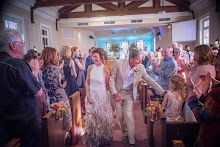 To meditate in action, we can sense “five lines.” To improve action increase slowness, variation, awareness.
To meditate in action, we can sense “five lines.” To improve action increase slowness, variation, awareness.Play this game today: Sense both arms and both legs and your spine, and follow your breathing. A lot, and a blast when we can pull it off.
And here’s a great warm up into the five lines, and a sweet beginning to healing and improving our backs.
Try this : five lines in sitting.
1) Sit, not at the back of the chair, feel your five lines: two arms, two legs, spine.
2) Move your pelvis back and forth a bit, and sense the shifting shape of your spine, like this: belly in, weight to back of your pelvis, head and chest a little down and forward; now rocking to the front of your pelvis, belly a little forward, back arched, head upright. Sense your 5 lines in this.
3) Take your right hand at your left thigh, and lean forward and caress your left leg, with your hand going toward the foot, and back up again.

Many times. Sense your five lines and other parts while you do this.
4) Rest. And then, take the left hand behind the left knee, and right hand behind your head, and lift your left knee a little and bring your right elbow toward your left knee.

Go gently, slowly, easily. Many times. Sensing your five lines.
5) Rest., Now, look to the left and put your right hand behind your head and near or over your left ear. Hold again your left knee with your left hand.

Letting your head and spine turn even more to the left, and sensing your five lines as you do this, bring elbow and knee towards each other again.
When you come back up, let your elbow go out the the right a bit, so you are sure you are coming all the way up. Even let your back straighten and arch slightly each time you come up.

Go nice and slowly, feeling a bit of a twist to the left each time you go down, and an untwisting to the right as you come up. Slowly, slowly, slowly. And enjoy.
6) Rest. Now pick you left leg, with your right hand holding your right ankle and left hand holding your left knee. Lift the knee and leg toward your face and let the chest and head come forward, and then back, slowly, sensing your 5 lines.

A bit, shift your held leg right and left, again sensing your five lines, minimizing effort and maximizing pleasure and learning.
7) Rest. Do the original movement of right hand down the left leg and see if this is different, all the while sensing your 5 lines.
8) If you want to do the opposite side, 5 lines, all the steps go ahead.
Today’s game: five lines, and feeling how to make bending more interesting and variable for ourselves.
Labels: 5 lines, awaring, forward bending, movement with awareness










































